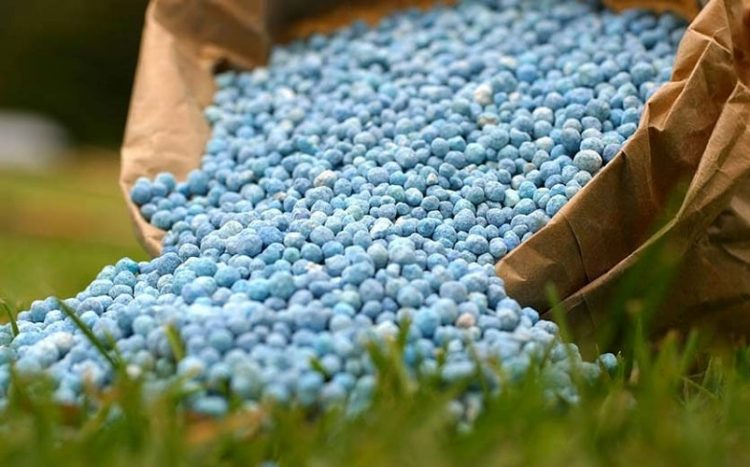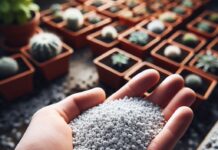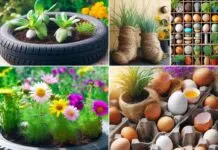All About Fertilizers in your Gardens Nursery
Fertilizers are it worthwhile to devote to environmental impacts? and on health, a seemingly natural activity What is gardening? so because of this, we must control our fertilizers in gardens.
Without a doubt, because the daily practice of this leisure more and more widespread can reduce the quality of our environment. The traditional family, the weight of habits, and the lack of knowledge about natural elements are all likely to disturb the environment naturally. The real market that recreation currently represents “Green” also calls for an awareness of the need for responsible consumption, and more respect for the environment and the health of everyone.
It is with this in mind that this guide, which reviews the different aspects of gardening and provides information and advice to make them compatible with the safeguarding of the natural environment, has been designed. May it help your garden with pleasure, in an environmentally healthy and preserved and with respect for future generations …
Fertilizers
The gardener, manager of the soil and its fertility!
1. Know the soil of your Garden
Chemical fertilizers: short-term results Fertilizers seem to be the solution to many problems: plants that grow badly, shrubs or flowering plants that do not “bloom”, trees fruit trees that do not “carry”, etc. To remedy this, the amateur gardener uses it with more or less happiness according to whether he has received the appropriate and effective advice from the specialist, that he deciphered with more or less happiness a label, or that he followed the “enlightened” advice of a friend or a better practitioner. And it works! The results are there, at least in the short term. And if it does not work?
In this case, he adds a little more mixture, tries other products, moves the plants, gives up … … and long-term danger!
The use of fertilizer is not a practice to leave to chance
Indeed, it is human intervention in the natural environment. Essential to correct deficiencies and impoverishment due to exhaustion soil requested by a prolonged operation or to improve natural soils poor, she can cause disturbances middle natural and environmental, and all this more than she is badly controlled excessive or linked to contributions immoderate of products chemical.
You Must Know!
Before using the Fertilizers… you have to know the soil of your garden! Whether flowers or vegetables, the soil must meet at least two requirements for good production:
1. It must have a good structure.
2. It must contain the nutrients necessary for the growth and development of plants.
2. Nature and biodiversity
The soil is a living medium
The soil is the support that is too often unknown to vegetation and the animal world that colonizes it on the surface. It constitutes in itself a living environment where microorganisms, mycelia.
Mushrooms, insects, worms, crustaceans, and arachnids, themselves are all the more diversified and abundant as the quality of the middle is high.
Just as there exists on the surface of the planet rich and diverse as the forest, with its remarkable biodiversity, and poor and abandoned environments with no greater trace of plants and animals, like the desert, it is rich soils and teeming with life and poor and desert soils (real ecological deserts). Improving the environment and therefore the quality of the living environment is also aimed at a balanced nature and higher quality biodiversity.
The return to nature In our gardens, we can strive toward this ideal
• by the reasoned management of our space,
• by developing the approach of the natural garden,
• by diversifying the physical aspect of the environment (creation of a pond, nest boxes for birds, insects, and bats, building shelters for mammals insectivores, amphibians, etc.),
• by growing, preferably, plants from seeds adapted to our soils, by planting old fruit trees local varieties that are more resistant and better adapted
3. The Amendments
Make the bed of vegetation and wildlife The amendments are intended to improve the physical state of the soil (heavy, compact, packed, sandy …), its acidity, and organic matter content.
The soil is acidified by a natural process that results from leaching by rainwater and plant harvesting, two phenomena that “Consume” limestone.
The physical quality of the soil (light, loose) and a pH of about 6.5 (the better level of assimilation of mineral elements by plants) define the ideal conditions for maximum diversity of microflora and microfauna of the soil and intense biological activity of these living beings.
There are 02 Types of Amendments:
1. The limestone or basic amendments
They are intended to bring the pH of the soil to around 6.5. We design the supply of limestone under the generic term of liming. Do not overuse liming because there is a risk to unbalance the pH and especially provoke an imbalance in nitrogen reserves (N). The limestone amendments present the disadvantage of accelerating certain combinations of chemicals, which release too much nitrogen plants can not assimilate.
You Must Know
There are various types of limestone amendments in commerce:
• Crushed limestone: rock rich in calcium carbonate;
• Dolomite: a rock containing calcium carbonate and magnesium;
• Lithophane or maërl: calcified seaweed mainly constituted of calcium carbonate. It also brings magnesium and trace elements ;
• Marl: a clayey rock containing calcium carbonate. Interesting for sandy soils, because of their richness in clay and calcium;
• Quicklime or slaked lime: limestone calcined, very soluble, and therefore to be avoided.
2. Organic amendments (manure and compost)
Organic amendments increase the rate of organic matter in the ground. They feed the living things of the soil, which will free, in a progressive and balanced way, the foods needed by plants.
They improve the water retention capacity and the porosity of the ground. They ensure good cohesion between the particles of the earth. These characteristics allow the soil to be less leached by the waters of rain and keep its mineral elements that are not washed away with the water. Air and water circulate better in loosened soil and roots plants penetrate more easily into the soil in search of nutritional elements.
Various Organic Amendments are Used
Manure: it is constituted by a litter of farm animals. he contains on average from 28 to 30% of organic matter. The manure of Sheep is the richest, followed by that of a horse. We mainly use cattle manure, which is easier to obtain, but also the least concentrated in nutrients. Manure should always be used after a composting of 6 months minimum. In this way, it does not risk not burning crops, nor causing rots, because of its incomplete decomposition.
Compost is an amendment that we can produce ourselves from all organic garden waste (leaves, grass, branches …) and our household organic waste (peels of apple earth, fruit, coffee grounds, kitchen waste …).
Composting is a way of making or preparing compost which is used to enrich and improve the soil of the garden by earth a little bit of what was taken from him. Also, it is an effective way to lose weight in our garbage bin by lightening it from all our waste organic.
Must know :
Among the amendments intended to improve the structure of the soil, one most commonly used is peat. This is constituted by anaerobic fermentation (in the absence of oxygen) of organic. Peat has formed in large swampy areas 10,000 years ago.
Its constitution is a very slow phenomenon: under the best conditions, a layer of 1 mm per year. Peat cannot be considered a renewable resource.
In the USA, its exploitation is no longer allowed. Since then, as far as possible, avoid using it. Peat is also part of the mixes that constitute the loams Trade. There is now a label in Belgium for the marketing of loam without peat.
There are commercially available compost activators containing animal proteins. The instructions for use prescribe not to use this kind of product on the fields, presumably to avoid the risk of BSE contamination in cattle (mad cow disease). But manufacturers advise their use in your compost! Find the mistake! Also, beware of composts whose origin is not specified in the smallest details. Indeed, there are marketing attempts at some sludge from sewage treatment plants or garbage treatment plants.
4. Fertilizers
Before thinking about fertilizers, the gardener must think about “soil quality and amendment”.
There are three types of fertilizer:
• Organic fertilizers: they are obtained from animal waste (blood powder, bone powder, crushed horn). In this case, they do not bring on the ground very little organic matter, not providing it than the essential elements of plant nutrition. Compost, manure, and slurry also provide nutrients, but they are more considered amendments, improving the structure of the soil.
• Mineral fertilizers: these are natural fertilizers, resulting from the extraction of mining, volcanic rocks, and wood ash …
• Chemical fertilizers: these are synthetic products of origin industrial chemical or natural products processed by the industry.
You Must Know
In the case of fertilizers, a deficiency in one element may come from the excess of another.
There is no need to dump quantities of fertilizers on hard ground like concrete or a pile of sand, the plants will not bloom better and will not grow faster.
5. The impact of fertilizers
on the environment Fertilizers, no matter how! Eutrophication and groundwater pollution Excess fertilizers are not absorbed by the plants.
When the quantities of fertilizers are excessive or if the spreading period is inappropriate, a certain amount can be dragged with rainwater to the waters of a surface without penetrating the soil. These fertilizers will promote the exaggerated development of algae and undesirable effects in lakes and rivers. These will suffocate the environment, consume in excess oxygen dissolved in the waters and thus prevent the development of plants and animals, killing them.
This is the Phenomenon of Eutrophication
Another quantity, not absorbed, will be dragged towards the tablecloths underground. These will be polluted by the rise in the concentration of nitrates and phosphates in waters subsequently intended for human consumption. So, the amateur gardener can unintentionally participate in the increase of water pollution just like the farmer with slurry and chemical fertilizers or the particular using phosphate-rich detergents.
Depletion of phosphate resources
If elements like potassium (a component of rocks) and nitrogen (which make up 79% of the air we breathe) are inexhaustible on earth, it is not the same for phosphates (P). At the current rate of consumption, world reserves would only provide about 200 years of supply. It is, therefore, a non-renewable resource. Also, the deposits are located mainly in Africa where their extraction is not always done in conditions acceptable to social. Waste of energy Chemical or synthetic fertilizers requires a huge energy consumption for their industrial development. They contribute to depleting non-renewable energy resources and cause certain nuisances, resulting from process and industrial facilities.
Excess of Nitrates
An excess of nitrates on crops affects the taste of plants and can promote the development of aphids. Similarly, an excessive concentration of nitrates in food can dangerous. Again, the quality of food products and respect for the environment are linked. Contamination of the food chain. Besides, some chemical fertilizers contain metals heavy metals (cadmium, mercury, lead …) that can be transferred to plants, leading to health risks contaminating the entire food chain and living beings.
In summary
Abuse of fertilizers promotes eutrophication, exhausts natural and energy resources decrease the quality of food, and may be harmful to health.
Nitrates: salts of the acid nitric, used as fertilizer. Nitrates are very soluble. They are not retained by the ground and the plant assimilates them quickly.
Phosphates: compounds of phosphorus minerals. Phosphates were widely used as softeners for detergents. Very favorable and even essential to living beings, it is their presence in excess in the aquatic environment that causes their pollution by the phenomenon of eutrophication.
6. Adopt new Behaviors
Rational use of fertilizers is necessary for the growth and the development of plants and vegetation. Before choosing a type of fertilizer, the hobby gardener will take stock of the soil that it works, will measure its pH, and determine its needs with the type of culture.
There are, in fact, many combinations of fertilizers, none of which offer all the benefits. To do this, it is essential to have a good guide to gardening to know the requirements of plants or vegetables that we cultivate and ask for wise advice. A soil analysis, carried out by a professional laboratory, can also be useful. You will find references to laboratories in the useful addresses at the end of the volume.
-The environmental aspect will be taken into account first and foremost.
-Vegetable organic fertilizers are also amendments.
-They produce humus and improve the structure of the ground.
Organic Fertilizers
Organic fertilizers are more economical at least if you make your compost or if you get your manure at the neighboring farmer’s. In the trade, however, these products are very expensive. Slower in their action, organic fertilizers also allow for improving the soil structure, maintain the stock of humus, and satisfy the needs of plants in nutrients.
The gardener will use organic fertilizer for regular soil maintenance of good quality, improve acid soils and lighten packed soils. Organic fertilizers tend to constitute the best garden soil possible with respect to and improvement of the environment. Chemical fertilizers are more likely to increase the concentration of mineral soil directly assimilable by plants.
The Balance of Plants and Nature
They, therefore, make it possible to meet more specific needs and are more adapted to the “instant” requirements of crops. They are, on the other hand, less safe for the balance of plants and nature, more polluting by their manufacturing processes and sometimes by their use. If the fact that they are cheaper than organic fertilizers in commerce can be tempting, their impact on the environment cannot be neglected.
Fertilizers or Fertilizing Agents
It is necessary to regularly fertilize your soil, especially if the plants are close together and in reduced spaces like window boxes or flower pots.
Different Fertilizers
General fertilizers (8% N, 8% P, 8% K), whose composition is balanced for all plants.
Compost from the decomposition of vegetable matter rich in nitrogen.
Manure is an organic fertilizer rich in nitrogen and trace elements.
There are different types of manure:
- Fresh cow dung improves light soils fresh
- horse-dung and donkey dung, with their drying powers, improve heavy soils fresh sheep- and goat dung are good for heavy soils. They are the richest in organic material.
- Poultry dung is good for heavy soils.
- Composted dungs are usually well-balanced and don’t require pre-composting like the aforementioned fresh dung.
Specific fertilizers for tomatoes, strawberries, vegetables, fruit trees, and roses…. are adapted to a given plant or type of plant.
Roasted horn is a fertilizer composed of organic nitrogen. It’s a fertilizer that decomposes very slowly.
You can also find different organic fertilizing seeds like mustard, which can be sown in parts of your patch temporarily not in use. You just need to turn the soil over before your plant flowers. Spinach is a natural fertilizer in that it captures the nitrogen in the air. At the time of harvesting, cut it at the soil level and leave the roots.
Organic fertilizers are decomposed slowly by the micro-organisms contained in the soil and will feed the plants little by little. For a thorough treatment, they should be introduced into the soil in Autumn, so that they can start their slow decomposition to be ready for the return of Spring, helped by the heat.
To guide you, here are the main basic ingredients that can be found in the composition of all commercialized fertilizers.
Nitrogen (N)
Nitrogen is the most important element for healthy leaf growth. Bad growth and yellow leaves are a sign of a lack of nitrogen.
Phosphorous (P)
Phosphorous is a tonic that brings sturdiness and resistance.
Potassium (K)
Potassium helps flowering and improves the taste of fruit and vegetables.
Magnesium (Mg)
Magnesium is an element of chlorophyll. Stains on the leaves is a sign of a lack of magnesium.
Iron (Fe)
Along with other trace elements, iron is vital to the construction of the vegetal parts of the plant. Yellow leaves mean there’s a lack of iron.
Other elements, although in smaller quantities, are also important in the proper development of plants.
Using Fertilizers
Besides dung, fertilizers exist in different forms:
- pellets, liquids, in stick or soluble forms.
- Choose according to your needs – rapid action or long-term action.
Spring and Autumn are the best times to fertilize but follow carefully the instructions on the packet, as often fertilizers can burn the plant. You mustn’t put it directly on the leaves (except for leaf fertilizer), and fertilize on wet days or on days when the soil is wet so as not to burn the roots. Avoid fertilizing very young plants, which are quite fragile.
“It is important to store fertilizer out of the reach of children and domestic animals”










